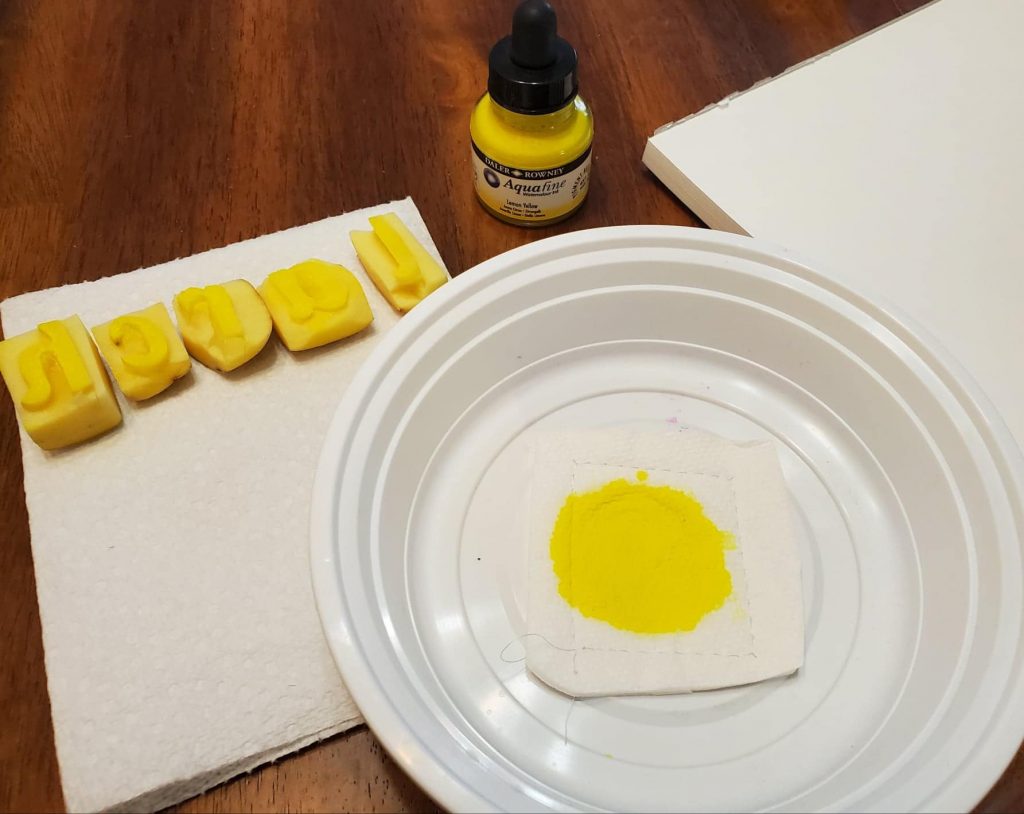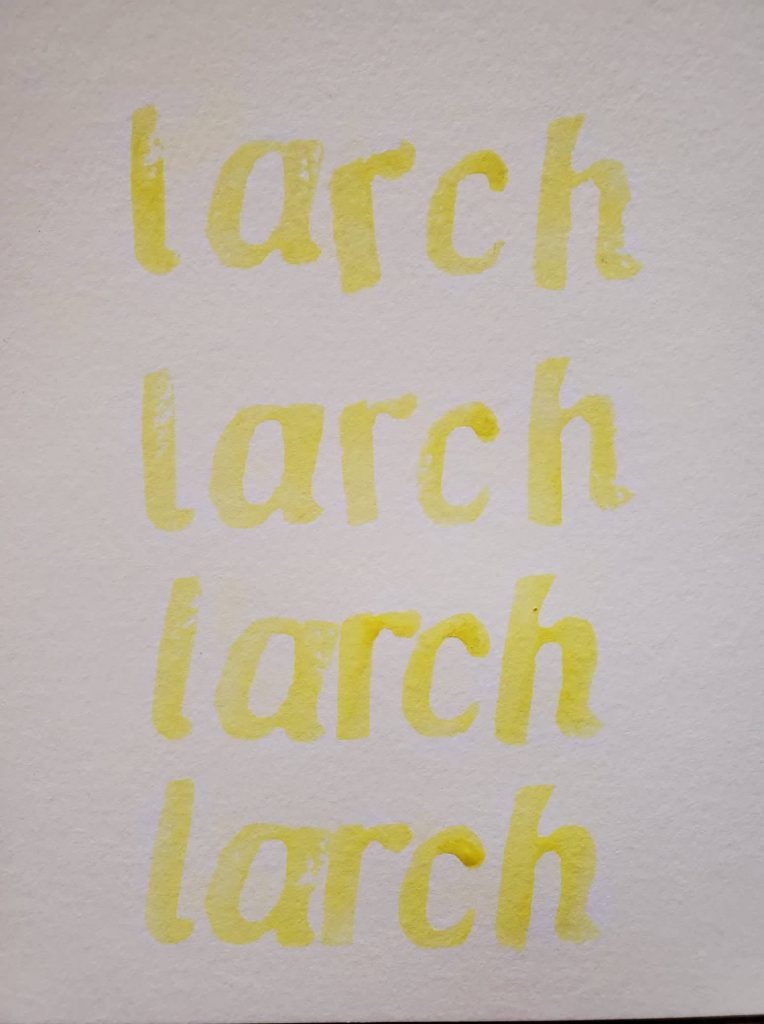
Listening to the Podcast episode “The Printed Book: Opening the Floodgates of Knowledge” from How it Began: A History of the Modern World, during the part introducing the invention of paper, I was reminded of an assignment I completed during my undergraduate degree. As part of an experimental poetry class, I created a chapbook of poetry about larches. To create this book, I made the paper myself, including yellow larch needles in the pulp mix. I then used individual letter stamps to stamp out the words of each poem. Doing this was tedious, but the stamped letters allowed me a certain amount of uniformity that my bad penmanship did not.
So, in approaching the task to print with potatoes, I chose the word ‘larch,’ (although I was tempted to try and find a word I wouldn’t have to mirror the letters for, or a word that would use both ‘u’ and ‘n’ or ‘d’ and ‘p’!).
Knowing that this process was going to take a bit of time, I took some time to choose a font and size, mirrored and printed out the individual letters, then used a small pin to poke the outline of each letter onto the potato surface prior cutting them out using a scalpel. While not perfect, I considered the letters ‘good enough’ to proceed to the printing step.
This was undoubtedly the most difficult part of the process. Positioning and stamping the letter so that it is oriented in the desired way and trying to figure out the kerning was the most difficult part of the process, and one that I did not master during my attempts. In the photo, they are positioned in order from top to bottom. The process of stamping a 5 letter word took about 45 minutes from cutting to the finished stamped word. Had I created the actual letters myself, it likely would have taken twice as long. My third and fourth attempts were where I made a genuine effort to make the word appear as similar as possible, and this was achieved by stamping each letter twice in a row, and even then, they are clearly not identical. I am most happy with the fourth attempt, even though both the kerning and the baseline are off. I imagine I could improve with practice, but it would take quite some time.

Regarding the specific letters, ‘c’ and ‘a’ were the most difficult to create using this method. The precision necessary to cut away the negative space to leave the letter was frustrating and I was happy to stop at five letters.
Given the amount of time it took to complete this task, the mechanization of writing, which I would consider to include not only printing, but the ability to type on a computer, is an enormous gift to those who wish to record thoughts, ideas, or opinions in writing.